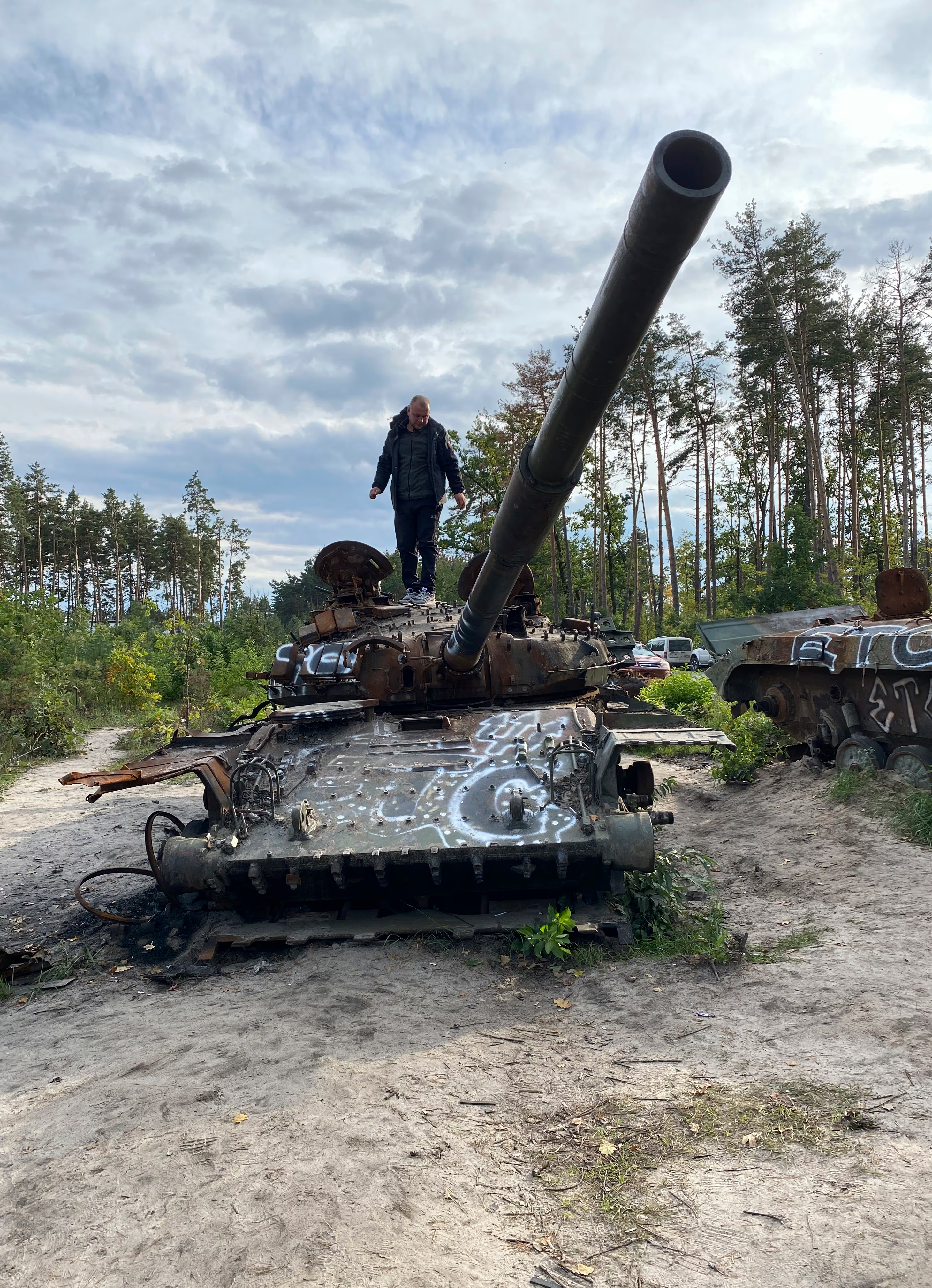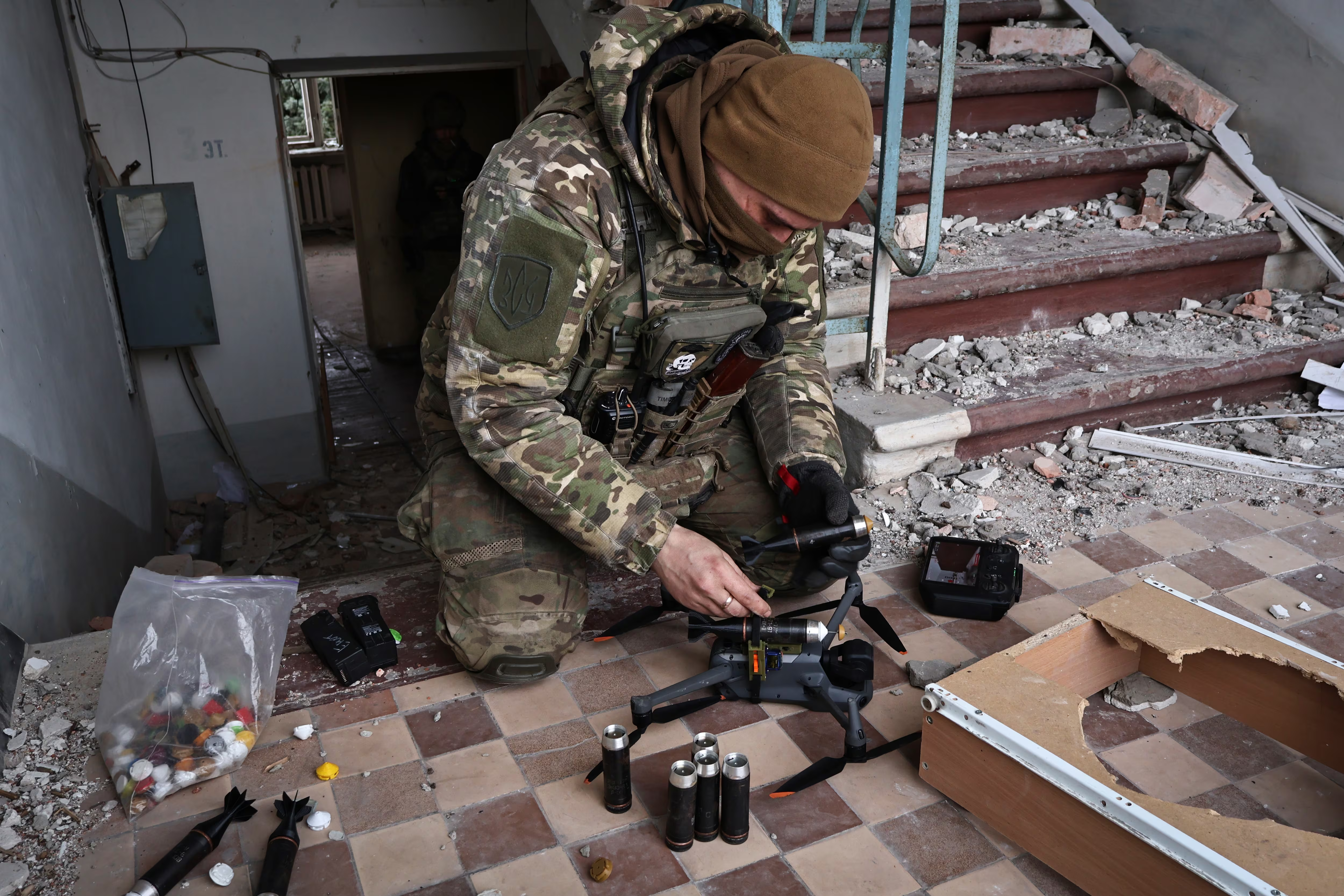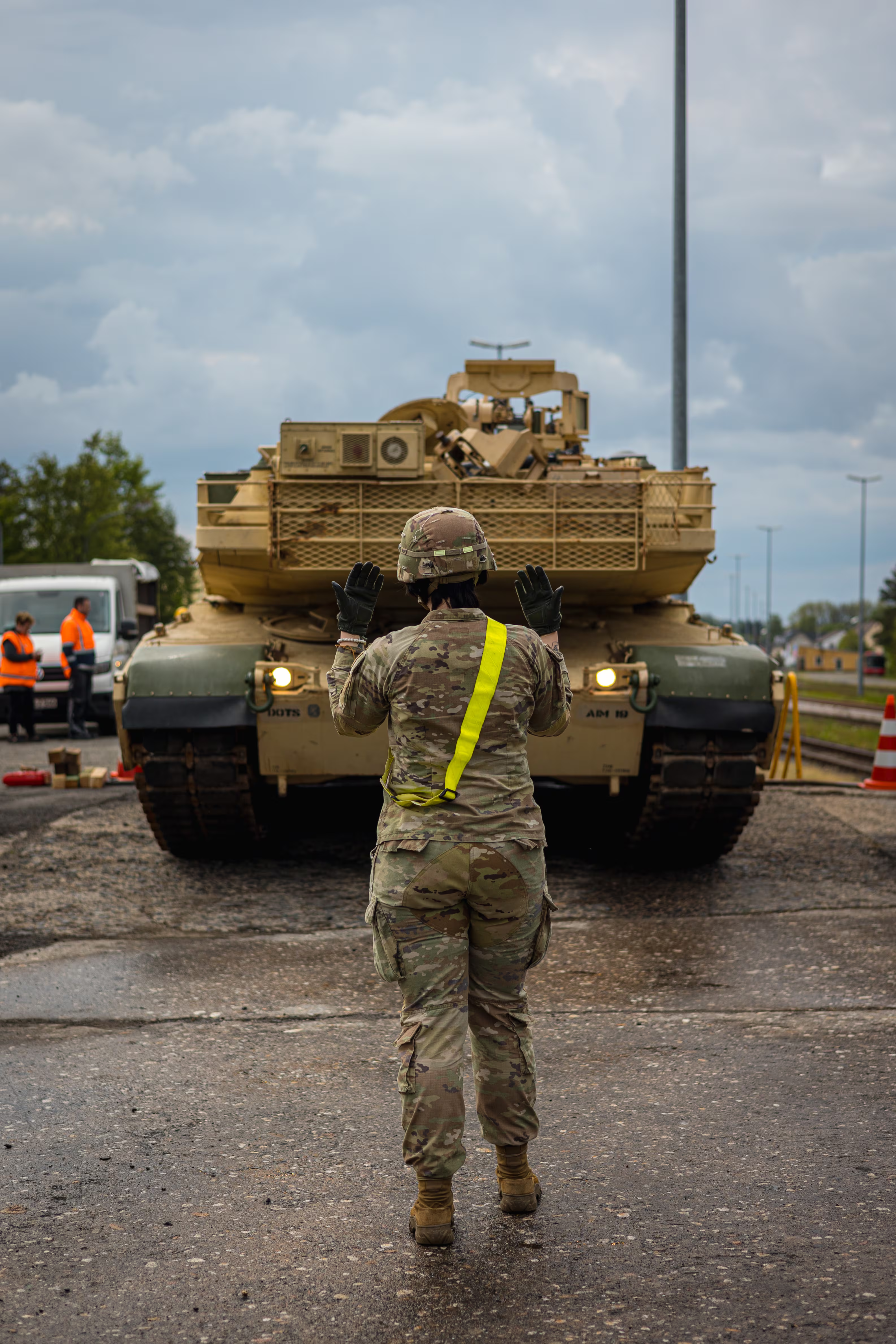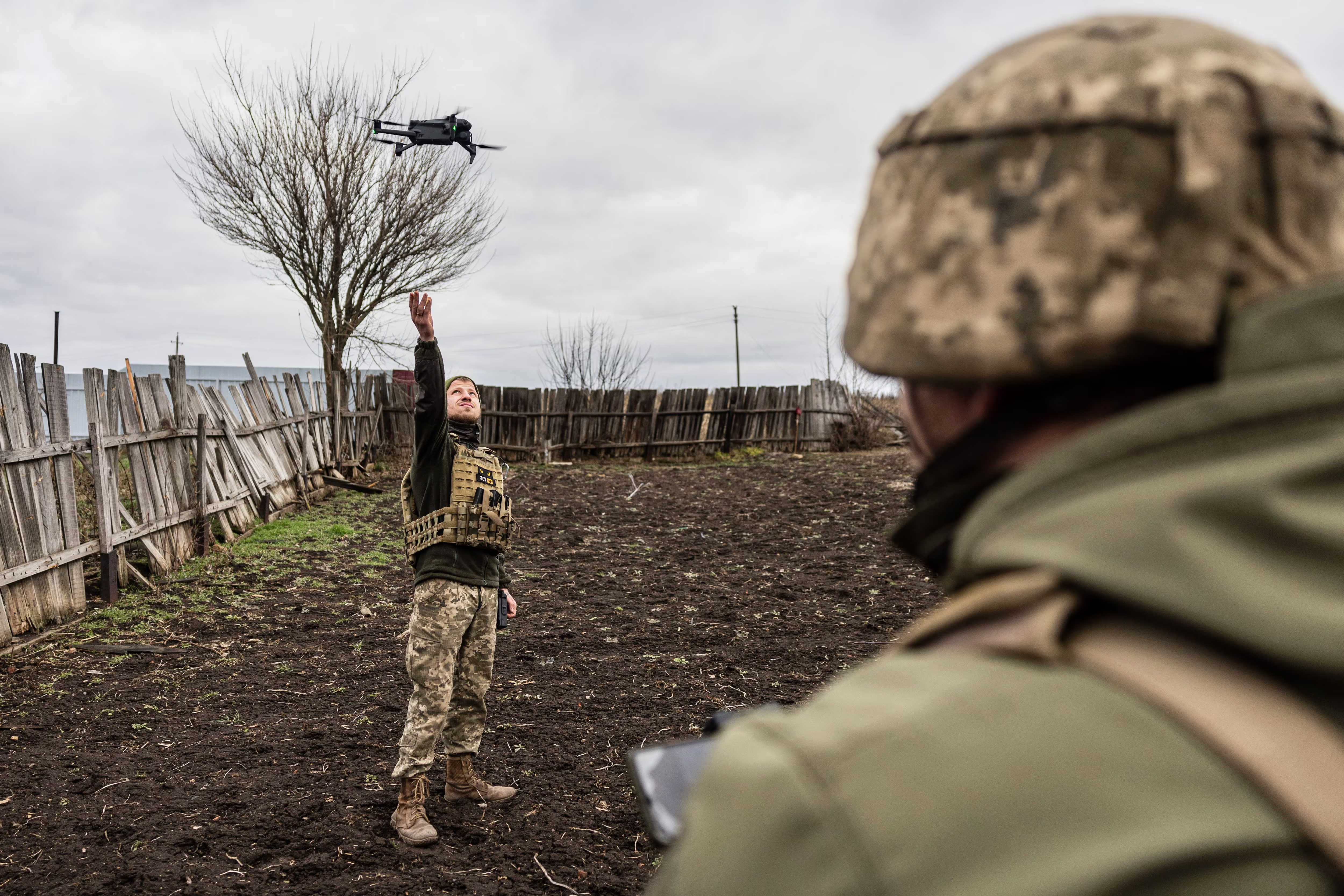WASHINGTON — Expensive, massive tanks destroyed by small and cheap loitering munitions.
Drones helping artillery locate targets.
A battlefield so flooded with sensors that it’s impossible to stay hidden for long.
Since Russia invaded Ukraine in February 2022, the Army has carefully taken note of these trends. Now those changes are reshaping the service’s plans from acquisition to how to approach formations to reimagining logistics. Already, the Army has rethought its plans to modernize tanks and altering its strategies with drones.
“The character of war is changing,” Army Chief of Staff Gen. Randy George told Defense News in an interview ahead of the Association of the U.S. Army’s annual conference. “It’s changed more in the last couple of years because of the war in Ukraine. And I think it will continue to change at a very rapid pace and we have to have the mindset to change with it.”
Gen. James Rainey, who leads Army Futures Command, the service’s organization in charge of modernizing the force, said the service needs to adapt its artillery strategy based on both “what’s happening in Ukraine” as well as what U.S. Army Pacific requires from conventional fires.
“Everything we’re seeing in Ukraine [is] about the relevance of precision fires, all the emerging technology, but the big killer on the battlefield is conventional artillery, high-explosive artillery,” he said.
The U.S. Army plans to issue a new conventional fires strategy by the end of the year, he added.
Ukraine and Russia are locked in daily heavy artillery battles. The U.S. and its partners and allies have sent a wide variety of artillery weapons, including the High Mobility Artillery Rocket System, or HIMARS, and millions of rounds of ammunition to counter Russia’s firepower.
Ukrainian President Volodymyr Zelenskyy has credited HIMARS with making a “huge difference” in liberating critical areas of the country under Russian occupation.
The war in Ukraine has also made clear artillery is still critical, said retired Lt. Gen. Ben Hodges, who previously led U.S. Army Europe. A layered approach to artillery in formations — meaning using towed or mobile systems with different types of munitions that achieve different ranges — is required, he said.

The new artillery strategy will determine both the existing capability and capacity while also detailing future needs, Rainey said. The strategy will also consider new technology to enhance conventional fires on the battlefield, such as advances in propellant allowing midrange cannons to shoot as far as longer-range systems.
The document will also address the role of robotics, such as autoloaders for munitions. The Army has experimented with technology like autoloaders, which take a burden off of artillery operators and improve firing rates.
Army acquisition chief Doug Bush told Defense News in September the fires strategy will drive key decisions within his portfolio, including how to pursue the Extended Range Cannon Artillery requirement.
“The strategy is looking at a combination of factors,” Bush said. “Where do you need towed artillery versus perhaps tracked versus perhaps wheeled? What can you do with munitions to get range versus building new cannons?”
The Army is developing an Extended Range Cannon Artillery system that uses a service-built 58-caliber gun tube mounted on the chassis of a BAE Systems-made Paladin Integrated Management howitzer.
But the service in 2020 also assessed available 155mm mobile howitzers seeking improvements in range, rate of fire, and mobility over the artillery systems used within Stryker brigade combat teams. The Army evaluated at least four foreign companies’ offerings in a shoot-off, but ultimately did not move forward with a new capability.
A new artillery strategy could renew the push for rapid procurement of a field-proven 155mm mobile howitzer.
“Some of our NATO allies have some really good kit [and] capability that we’re interested in,” Rainey noted.
Bush recently visited 18th Airborne Corps, which consist of very light units and they “still value towed artillery, because they can move it around with helicopters. ... But other parts of the Army might want something different,” he said.
Taking a new look at an off-the-shelf mobile howitzer is a part of the strategy’s purview, he noted. “From an acquisition standpoint, if I get a requirement, we’ve got some options to go pretty fast, if it is acceptable, for example, to take a foreign system rather than building a new one from scratch,” Bush said.
“The broad lesson is that you still need artillery. It is the No. 1 killer on the battlefield, still in this conflict [in Ukraine],” he said.
A fresh take on tanks
The Army in September, after watching loitering munitions destroy tanks in Ukraine and observing both sides struggle to maneuver tanks on the battlefield, opted to scrap its upgrade plan for the M1 Abrams tank and instead pursue a new variant: the M1E3.
The Abrams tank “can no longer grow its capabilities without adding weight, and we need to reduce its logistical footprint,” Maj. Gen. Glenn Dean, the Army’s program executive officer for ground combat systems, said in a statement at the time. “The war in Ukraine has highlighted a critical need for integrated protection for soldiers, built from within instead of adding on.”
The Abrams tank “with all its hood ornaments is already too heavy,” Hodges told Defense News. “Getting heavier is not the answer.”
Part of the new effort will take weight off the tank, increasing its mobility and sustainability. Today, if a tank breaks or gets hit in combat, it requires two recovery vehicles to pull it out of the fight. Reducing the tank’s weight would help, Dean said.
The new design is also intended to integrate active protection capability, including protection from attacks to the roof from loitering munitions and drones.

Dean told Defense News in a recent interview the new design will consider how to reduce the supply chain and make it easier to maintain the vehicle while on the battlefield. It will also improve reliability.
Ukraine has begun to receive its 31 M1 Abrams tanks from the U.S. military, and the U.S. Army is likely to soon learn more about how the tank holds up against the Russians, Dean said.
The tank “remains very, very relevant,” Army Secretary Christine Wormuth said at a recent think tank event. “The claims that we’re seeing the end of the value of tanks were a little bit premature.”
According to reports, in the first two months of the war, Russia lost well over 400 tanks, spurring a debate over whether tanks were too cumbersome for the modern battlefield.
Wormuth acknowledged munitions that can hit the top of armored vehicles and tanks remain a challenge and said “we are working to develop capabilities to defend against that.”
Dean, noting he could not discuss details, said the Army is working extensively on how to protect tanks and combat vehicles from loitering munitions. Loitering munitions regularly destroy tanks and combat vehicles on both the Ukrainian and Russian sides.
“We have got to get better at top-attack inbound defeat,” Rainey said at the AUSA Warfighter Summit in July. “It’s solvable.”
While the service has long focused on protecting combat vehicles from the side and has integrated Rafael’s Trophy active protection system on the M1 Abrams tank, the protection has decreased the tank’s mobility. The same problem applies to the APS kits, which provide protection from anti-tank weapons. The service has yet to field APS on either the Stryker combat vehicle or the Bradley infantry fighting vehicle.
Moving in minutes
The Army has long set up elaborate command posts on the battlefield, putting up climate-controlled tents equipped with generators. The service has said these tactical operations centers must get smaller, both in size and in electromagnetic signature.
But the war in Ukraine has put more pressure on the service to act.
“Gone are the days where you’re setting up a whole [tactical operations center]. And two hours is too much time,” George said. “We need to be able to move in minutes. We need to be able to command and control on the move.”
He noted the war has also proven the need for open architecture that is mobile and can be rapidly updated.
The Army “has to fix what it has and then pivot to what the C2 architecture is going to be in the future,” George added.
He told Defense News he was struck recently by watching a unit going through a large exercise and only relying on five Stryker combat vehicles and 35 people to provide command-and-control for the entire brigade combat team. The Strykers, equipped with commercial, off-the-shelf laptops, tablets and radios, never had to be together physically as they were connected through a network operating as one node, George said.
Wormuth also recalled a similar visit to a training rotation at Fort Johnson where a unit had designed its TOC to be “much more mobile” and could break down and set up within two hours.
“That’s definitely something that we’re going to be spending time on, developing the capabilities to do that,” she said.
Ukraine has taught the Army it is going to have to learn how to “fight under constant observation of commercially available space, the electromagnetic spectrum, social media,” Rainey said. “We are going to have to figure out how to fight when the enemy’s going to know where we are or prevent him; so concealment, deception, camouflage, constantly good tactics.”
Wormuth also noted the Army must be able to operate even if command posts are cut off due to failed signals or enemy jamming. The Army is experimenting in this type of environment regularly during events like Project Convergence, a large exercise focused on developing a modernized force.
Remote logistics
The U.S. quickly faced a challenge early in the war in Ukraine. It was sending complex equipment to Ukraine — but without the experienced maintainers to fix it.
From a parking lot in Poland just months after the war began, the U.S. Army started answering the call for help, offering remote maintenance support. Army maintainers virtually demonstrated maintenance to their Ukrainian counterparts.
Since then, the Army has expanded its use of remote maintenance support to nearly every platform sent to Ukraine, including those of allies and partners. The service built a facility and a repair parts warehouse in Poland and began offering expertise through text message, prerecorded video or live stream.
This effort is now providing a road map for future logistics. George said at a recent event Ukraine is changing how the service “is looking at things on the logistics side,” citing virtual maintenance and 3D printing of parts.

The Army now weighing how to apply tele-maintenance to the Indo-Pacific region, George told Defense News.
Additionally, the Army, watching Ukraine, is preparing for what it calls contested logistics, meaning its logistical efforts would be under constant attack.
“There’s been a theoretical recognition that logistics were going to be contested, but the Ukraine conflict, I think, has really made that very real to all of us,” Wormuth said at a recent event.
The Army has established a new cross-functional team for contested logistics under Army Futures Command focused on this challenge.
Preparing for the future
The war in Ukraine has, according to service leaders, validated many of the Army’s modernization priorities, laid out a little over five years ago.
The Army was already focused on countering unmanned aircraft systems because of operations in the Middle East and had set up a joint office at the Pentagon. The use of drones on the battlefield in Ukraine has accelerated efforts to come up with a layered approach to defeating the systems, both big and small.
“The scale of [drones on the battlefield] has been sort of astonishing and it has reinvigorated this focus on the lowest sort of short-range air defenses that would be needed for that,” Stacie Pettyjohn, a defense analyst at the Center for a New American Security, told Defense News.

And not all technology used to defeat drones needs to be exquisite. While the Army is working on directed-energy and high power microwave capabilities to defend against drone swarms, “you’re seeing that the Ukrainians need things like a smart shooter, a sight that they can put on a rifle that allows them to use [artificial intelligence]. It’s still pretty advanced, but it’s this tech that improves existing guns and allow them to take out some of the smallest quadcopters,” Pettyjohn said.
Formations may also need to change, Wormuth said. The Army “need[s] to probably have organic air defense with our fires in our maneuver units so that they can protect against drones.”
Air and missile defense for threats beyond drones is also receiving new attention. Russia has shown it will use multimillion dollar rockets and missiles against apartment buildings, Hodges said.
Wormuth said the Army is beginning to grow the air and missile defense force. The service is in the process of building an additional Patriot battalion, but it’s not dedicated to a specific combatant command yet. The Army also wants to grow additional Indirect Fire Protection Capability units as well, she noted.
These new units will be able to defend against cruise missiles and drones along with rockets, artillery and mortars at fixed and semi-fixed sites. The Army is still developing prototypes.
Having the ability to see or sense as much as possible at all times, is another way the Army is changing because of Ukraine. “There’s a lot of interest in drones to be able to provide us with [persistent sensing],” Wormuth told Defense News. “But we’re going to have a layered approach to that ... we’re investing in the [High Accuracy Detection and Exploitation System], fixed-wing platform. ... I think you’ll see aerostats.”
Drawing from Ukraine, “there’s no shortage of observations that we should think about,” Rainey said. And the Army is “committed to turning those observations genuinely into lessons learned.”
Jen Judson is an award-winning journalist covering land warfare for Defense News. She has also worked for Politico and Inside Defense. She holds a Master of Science degree in journalism from Boston University and a Bachelor of Arts degree from Kenyon College.




